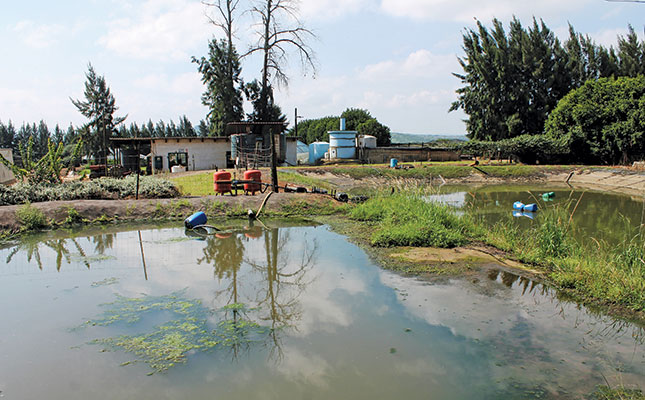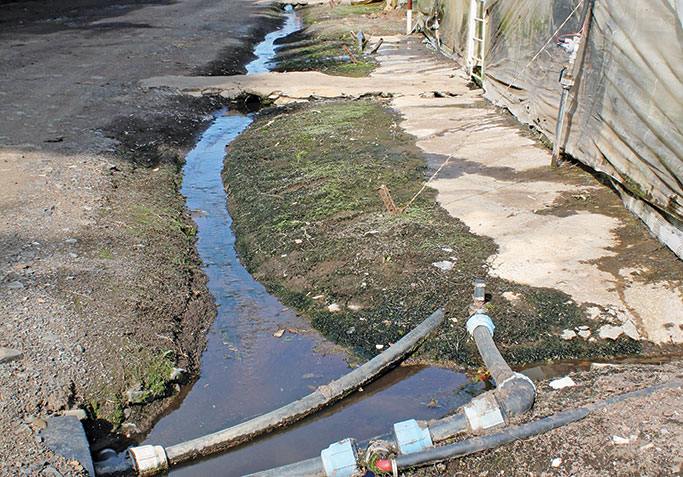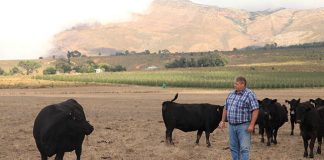
Photo: Lloyd Phillips
Mike Kruger has produced a variety of forestry, fruit, lawn and ornamental plant seedlings under intensive conditions in KwaZulu-Natal’s Cramond area since the 1980s.
During this time, he has learnt that irrigating his crops with contaminant-free water is an absolute necessity.
READ Designing an irrigation system according to soil type
Untreated irrigation water can carry pathogens that move easily from plant to plant within the densely populated growing area with its hundreds of thousands of seedlings.

Some pathogens negatively affect the health of the plants; others can contaminate the produce.
Untreated irrigation water can also introduce undesirable algae and slime into the growing area, and even become a conduit for damage-causing nematodes among the plants.
Top Crop Nursery draws irrigation water from the Umgeni River, 400m from the nursery.
“Over the years, the quality of water from the river has deteriorated. From about 15 years ago, we had to start treating it before applying it to the seedlings,” recalls Kruger.
Choosing the method
As the pH level and quantity of total dissolved solids in the water varied almost daily, it was difficult to decide on the most cost-effective treatment. After extensive research and consultation with water quality experts, Kruger settled on a treatment system that uses flocculation followed by chlorination.
“With the right infrastructure, knowledge and handling, this has proven to be an excellent water purification system for us,” he says.
READ The main types of irrigation
Flocculation involves removing all undissolved and dissolved organic matter loads in the untreated water.
This keeps the chlorine requirement for the next stage of treatment to a minimum while still optimising its efficacy. Removing organic matter also prevents any added chlorine from reacting with the organic matter and any ammonia already in the water.
This reaction produces chloramines, which are potentially toxic to plants. Phenols in the organic matter can also react with chlorine to produce toxic compounds.
How it works
The flocculation process involves using a flocculant, a substance that causes particulates in a liquid to clump together into a mass called a floc. This floc may rise to the top of the liquid (creaming), settle on the bottom of the liquid (sedimentation), or stay suspended in the body of water, from where it can easily be filtered.
In the case of creaming, the floc can be skimmed off the top of the water, while with sedimentation, the clean water above the floc can flow out of an overflow pipe.

“There are many organic and inorganic flocculants available, but we prefer using aluminium sulphate at 0,035% concentration because it’s fairly well-priced and readily available,” says Kruger.
“As most river or surface water is soft [low alkalinity], we add calcium hydroxide to increase the pH and buffer the water. The calcium hydroxide increases the pH to above 10,5 and this neutralises any ammonia in the raw water.”
Because this pH level is still too high for treatment with aluminium sulphate, Kruger and his team add sulphuric acid. This reduces the pH to 5,5, enabling the water to be treated with chlorine to kill any plant pathogens.
Chlorination
Worldwide, three forms of chlorine are commonly used for water purification. The first, sodium hypochlorite, results in water that is toxic to plants.
The second, liquid chlorine (also known as chlorine gas) requires specialised equipment and handling to prevent the formation of hydrochloric acid.
READ Water problems: why SA’s farmers face multiple risks
This leaves calcium hypochlorite (powder chlorine), the form that is best suited to a nursery’s needs. It contains 70% available chlorine, is relatively easy and safe to store and dispense, and is the least toxic of the three.
“Being bound by calcium, it seems to have less phytotoxicity on plants,” explains Kruger.
He points out that the pH of the water being treated with chlorine significantly has an impact on the effectiveness of this element. While chlorine is active in water of pH 7 to pH 7,5, the water drawn from the Umgeni must be at a pH of 5,5 to achieve the purification level required by Top Crop Nursery.
“Untreated water with pH 8 or higher requires more chlorine to achieve the water quality we need,” explains Kruger.
“In untreated water of pH 5,5, the chlorine reacts well to produce hypochlorous acid, which is an extremely effective reducing agent for getting the water to safe irrigation quality.”
To maximise the effectiveness of the chlorine, the water is circulated by pump within a closed environment, such as water tanks, for at least two hours before being exposed to the atmosphere and sunlight, both of which degrade chlorine’s efficacy.
Top Crop Nursery’s water purification system runs continuously and processes 4 000ℓ/ hour, which means that Kruger and his team must test the water quality regularly for free chlorine and total chlorine. The level of total chlorine must never be greater than the level of free chlorine at any time, as this will result in the production of undesirable chloramines.
The level of total chlorine should always be kept as close as possible to a zero reading.
To further ensure that its purification system works optimally, Top Crop Nursery sends water samples to a government-certified laboratory twice a year for quality testing.
Kruger also keeps water wastage to an absolute minimum.
“Any excess irrigation water that runs out of our nursery tunnels is channelled back to the start of our purification system for full treatment again,” he says. “We also flush our tanks weekly to remove lime and organic matter that may be trapped in the system.”
Phone Mike Kruger on 033 569 1333/4/5, or email [email protected]. Visit superlawn.co.za










